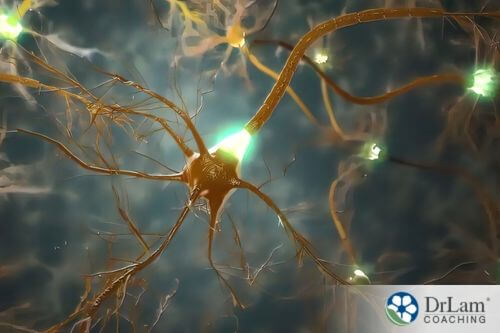 Are you dedicated to your fitness routine? Want to get better results from every workout? Or have you hit a plateau in your workouts, where you train hard but can’t seem to get the results you’re looking for? Then you might get better results by learning to visualize muscle growth.
Are you dedicated to your fitness routine? Want to get better results from every workout? Or have you hit a plateau in your workouts, where you train hard but can’t seem to get the results you’re looking for? Then you might get better results by learning to visualize muscle growth.
Your mind plays a critical role in the results that you get from your workouts. And yet many people ignore this vital component. If you’re eating the right foods, working out the right way and at the right time, and doing everything else you can to improve your fitness, but it isn’t working, then it’s time to try another strategy. It’s time to work out with your mind as much as you work out with your body.
This idea of mental training may also be good for people who can’t exercise because of physical illness, disability, or adrenal fatigue. And best of all, there are hardly any side effects to imagining a workout, so most people can try it without concern. However, if you are dealing with adrenal fatigue, it has downsides too.
Here’s how to start doing visualization effectively and why you may want to add it to your workout routine.
Obviously, if you want to be fit and healthy and built strong muscles, you need to do the work. And this applies to both avid lifters and to regular gym-goers who just want to look and feel strong. There are a range of strategies that will help you to get the most benefits from your workouts.
Some strategies used by expert lifters to boost the effects of their workouts are to:
It's important to be careful if you’re a beginner just trying out these strategies. If you aren’t in good shape or have been unwell, pushing your body too hard could very well be dangerous. This is why it’s vital that you always visit your doctor before starting any kind of workout program.
However, you may still not be getting the results you want, even when you’re doing everything that you can. This is when it’s time to take advantage of the mind-body connection by learning to visualize muscle growth.
It isn’t that hard to learn to visualize muscle growth. But it can make a big difference to your strength and fitness. This is a way of using your mind to tell your body how to increase muscle mass.
Visualization has become increasingly popular over the years. It’s used by athletes like Tiger Woods and Muhammed Ali before big events and as a regular part of their daily training. And if these top performers swear by it, it could work for you as well.
When you do visualization exercises, you imagine an entire workout in your mind. The key here is to make the visualized workout and the images as clear, sharp, and realistic as possible, going through each exercise as if you’re actually doing it. According to the research, this actually tricks your mind and body into thinking that it has worked out.
The research shows that visualizing a workout is almost as effective as actually doing a workout. It can help increase muscle mass and prevent muscle weakness. It also increases the strength of the neuromuscular pathways in the brain. This may be the reason why physical strength increases with mental training.
Mental training may also positively impact other cognitive mechanisms such as:
These effects combined may also boost motivation and confidence, which will all benefit your workouts and your daily life.
 Basically, to visualize muscle growth, all that you need to do is imagine yourself working out. Here are some steps to get you started:
Basically, to visualize muscle growth, all that you need to do is imagine yourself working out. Here are some steps to get you started:
You need a lot of detail with this exercise, so really immerse yourself in the exercise world during this time.
If you have Adrenal Fatigue Syndrome (AFS), learning to visualize muscle growth could have both benefits and drawbacks. AFS is caused by stress and the resulting overuse of the NeuroEndoMetabolic (NEM) stress response. This stress response uses cortisol released by the adrenal glands to make changes in the body’s circuits, composed of related organ systems, to help you survive stress. However, when stress is chronic, these changes become damaging. Essential hormone precursors are depleted, leading to hormone imbalances, overworked organs, and fatigue.
When this occurs, you may experience a wide range of symptoms from brain fog to weight gain to persistent infections or illnesses. And because few medical professionals acknowledge the existence of AFS, many people with AFS suffer for a long time with symptoms before the condition is identified. Instead, people with AFS often try lots of different strategies to improve their health, including doing more exercise to improve their physical health.
Ordinarily, doing exercise to improve your physical health and the strength of your muscles would be a good thing. But if you have AFS, the stress that results from exercising may just worsen your overall condition, sending you into adrenal collapse or worsening the symptoms you’re already experiencing.
Exercising requires your body to release cortisol. This hormone helps reduce inflammation and directs more energy to the muscles. However, when your body is already struggling to produce enough cortisol, the sudden demand exercise causes can cause an adrenal crash. This is where learning to visualize muscle growth may help. It is a more gentle way of getting the exercise you need.
Learning to visualize muscle growth may be an easy and stress-free way to get some of the benefits of exercise when you are unable to do the workouts because of AFS. This could be very helpful if your AFS doesn’t allow you to exercise.
However, you will still need to be careful with visualizing a workout when you have AFS. This kind of mental exercise may still increase your cortisol levels. And if you have AFS, your cortisol levels may already be dangerously high. Visualizing a workout may worsen this underlying problem, causing more fatigue in the adrenals.
This is why you need to seek out a medical practitioner aware of AFS to help you with adrenal recovery before adopting any new exercise practices. If you have AFS, then it’s vital that you talk to your doctor before starting any exercise program. A doctor who’s aware of AFS and the effects it may have on your body will be able to evaluate your condition and design an exercise program that will help, rather than harm, your body.
 The Neuroaffect Circuit is one of the six circuits that are part of the NEM stress response. This circuit includes the brain, the gut, and the autonomic nervous system (ANS). This triad uses neurotransmitters (NTs) to communicate and are deeply interconnected. So, if one component of the circuit malfunctions because of AFS, the others will start to show symptoms as well.
The Neuroaffect Circuit is one of the six circuits that are part of the NEM stress response. This circuit includes the brain, the gut, and the autonomic nervous system (ANS). This triad uses neurotransmitters (NTs) to communicate and are deeply interconnected. So, if one component of the circuit malfunctions because of AFS, the others will start to show symptoms as well.
High cortisol levels cause the activation of the sympathetic nervous system (SNS) and the adrenomedullary hormonal system (AHS), both of which work to gear the body up to cope with stress. When these systems are active, it causes the release of the NTs norepinephrine and epinephrine, both potent chemicals that can cause sleeplessness and other issues if levels remain high for too long.
These NTs can then cause sleeping issues, brain fog, memory problems, and mood instabilities as well as imbalances in several NTs that are essential for brain health and functioning.
Obviously, exercise can be very good for the health of the brain. It boosts endorphin levels and increases blood flow to the brain, which can help with cognitive function. It can also improve your memory and help protect you against disease by increasing connections between nerve cells in the brain. And when done correctly, it can also help improve sleeping patterns, which can be pivotal in improving your mental and overall health.
However, when you have AFS, too much exercise may increase cortisol levels, which may worsen imbalances in the ANS and in NT levels. It may also increase inflammation levels, which is connected to several health concerns.
This is where learning to visualize muscle growth may help. These kinds of mental exercises may help to exercise the brain and the body without causing too much extra stress or inflammation. If you’re very unwell because of AFS and don’t have the energy or the health to exercise normally, then it may be a way to gently ease your body and your mind into exercise.
However, make sure you talk to your doctor first and go gently. Your body will be in a very sensitive state if you have AFS, and any attempts to force it could cause additional stress that only makes your health worse.
Working out can be frustrating sometimes. You do all the work but sometimes just don’t get the results that you’re looking for. If you’re looking to improve the results that you get from your workouts and increase your muscle mass without actually working out more, then you need to learn how to visualize muscle growth. Here’s how to get started with this easy practice that can actually make a big difference:
For more help with designing effective workouts for your body or any other aspects of your health, talk to our team on +1 (626) 571-1234 or click here.
It isn’t hard to visualize muscle growth, and it may help to boost the effects of your workouts and prevent muscle deterioration when you’re injured. All you need to do is picture a workout in as much sensory detail as possible. Do this regularly and you should start seeing results!
